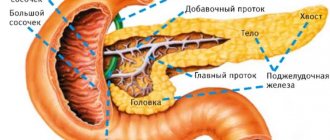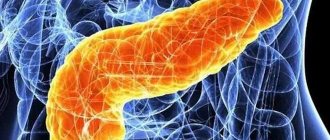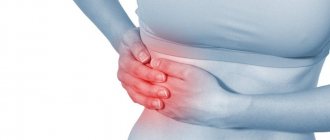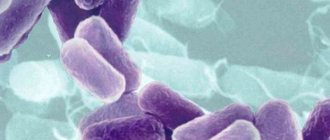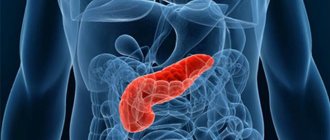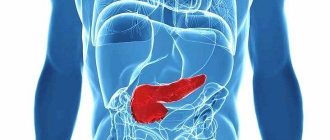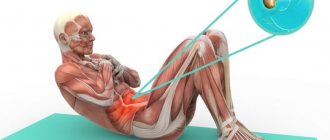The pancreas or, as it is also called, the pancreatic gland is an important organ of the digestive system, which is responsible for endocrine and excretory functions. Thanks to all the biologically active substances synthesized by the pancreas (PG), biochemical balance is maintained in the body. What pancreatic hormones exist and what are their functions in the body - all this will be discussed in this article.
How does the gland work?
The organ is divided into two parts - exocrine and endocrine . They all serve to perform their specific functions. For example, the exocrine part occupies most of the pancreas and serves to process gastric juice, which contains a large number of various enzymes necessary for digesting food (carboxypeptidase, lipase, trypsin, etc.).
The endocrine part of the pancreas includes small pancreatic islets, called in medicine “islets of Langerhans”. Their task is to divide hormones important for existence, which are directly involved in fat, carbohydrate and protein metabolism. But the functions of the pancreas do not end there, since this organ, synthesizing certain hormones, produces digestive fluid and participates in the breakdown of food and its absorption. Depending on how correctly the pancreas works, the overall health of a person may change.
Structure and functions
The pancreas is the largest among the endocrine glands. Located retroperitoneally. The structure distinguishes: a rounded head, a wider body and an elongated tail. The head is the widest part, surrounded by the tissues of the duodenum. The normal width reaches five cm, the thickness is 1.5–3 cm.
Body - has front, back and bottom edges. In front it is adjacent to the posterior surface of the stomach. The lower edge reaches the second lumbar vertebra. The length is 1.75–2.5 cm. The tail part is directed posteriorly and to the left. Contacts the spleen, adrenal gland and left kidney. The total length of the gland is 16–23 cm, and the thickness decreases from three cm in the head area to 1.5 cm in the tail.
The central (Wirsungian) duct runs along the gland. Through it, the digestive secretion directly enters the duodenum. The structure of the parenchyma consists of two main parts: exocrine and endocrine. They differ in functional significance and structure.
Exocrine - occupies up to 96% of the mass, consists of alveoli and a complex system of excretory ducts, which are “responsible” for the production and release of enzymes into the digestive juice to ensure the digestion of food in the intestines. Their deficiency has a serious impact on the processes of digestion of proteins, fats and carbohydrates. The endocrine part is formed by an accumulation of cells into special islets of Langerhans. This is where the secretion of hormonal substances important for the body occurs.
Participation in the synthesis of different hormones by the pancreas varies
Classification of synthesized substances
All hormones formed by the pancreatic gland are closely interrelated, so disruption of the production of at least one of them can lead to the development of serious disorders in the body and diseases that need to be treated for the rest of your life .
The pancreas produces the following hormones:
- insulin;
- glucagon;
- somatostatin;
- pancreatic polypeptide;
- vasointense peptide;
- amylin;
- centropnein;
- gastrin;
- vagotonin;
- kallikrein;
- lipocaine.
Each of the above hormones performs its own specific function, thereby regulating carbohydrate metabolism in the human body, as well as influencing the functioning of various systems.
Other substances
There are other pancreatic hormones that perform important functions in the body. Quite often, doctors have to determine the concentration of the following substances:
- Lipocaine – promotes the production of fats and the oxidation of fatty acids. It also protects the liver from developing fatty degeneration.
- Vagotonin – helps to increase the tone of the vagus nerve, which has a positive effect on the functioning of all internal organs.
- Centropnein is a component that activates the respiratory function, promotes relaxation of the bronchial muscles, it is responsible for the connection of hemoglobin with oxygen and its transportation.
- Thyroliberin - is responsible for the production of thyroid hormones in women who have given birth.
It is very important to know the role and functions of pancreatic hormones, this helps to prevent the development of complications.
Clinical significance of pancreatic hormones
If everything is clear with the hormones produced by the pancreas, then with the main functions that they perform, everything is much more complicated. Let's consider each pancreatic hormone separately.
Insulin
Of all the hormones that the pancreas synthesizes, insulin is considered the most important. It helps normalize blood glucose levels. The implementation of this process is due to the following mechanisms:
- activation of cell membranes, due to which the body’s cells begin to better absorb glucose;
- stimulation of glycolysis (the process of glucose oxidation) occurs;
- slowing down the process of gluconeogenesis (biosynthesis of glucose from non-carbohydrate substances such as lactic acid, glycerol and others);
- the flow of useful elements into the body’s cells (phosphates, magnesium, potassium) improves;
- protein synthesis is significantly enhanced, and at the same time its hydrolysis is suppressed. Thanks to these functions, protein deficiency is eliminated, thereby strengthening the immune system and improving the synthesis of various substances that are of protein origin;
- the functions of fatty acid synthesis are activated.
On a note! The presence of a sufficient amount of insulin in the blood prevents the development of atherosclerosis, reduces the level of “bad” cholesterol and prevents fatty acids from entering the circulatory system.
Glucagon
Based on its functions, glucagon can rightfully be called an insulin antagonist hormone. The main task of glucagon is to increase the amount of glucose in the blood, which is achieved through the following functions:
- activation of gluconeogenesis (production of glucose from components of non-carbohydrate origin);
- accelerating the work of enzymes, due to which the amount of energy increases during the breakdown of fats;
- Glycogen is broken down, which then enters the circulatory system.
Since glucagon is a peptide type of hormone in its structure, it is responsible for many functions and a decrease in its amount can adversely affect the functioning of many systems.
Somatostatin
Another hormone produced by the pancreas. It belongs to the group of polypeptide hormones and serves to suppress the synthesis of substances such as glucagon, thyroid-stimulating compounds, and insulin. When the level of somatostatin decreases in the gastrointestinal tract, serious disorders occur. First of all, this reaction is due to the fact that this hormone is directly involved in the production of digestive enzymes and bile (somatotropin reduces their secretion).
In modern pharmacology, somatotropin is used to create various medications that are prescribed to patients suffering from impaired synthesis of growth hormone in the body. If the amount of this hormone significantly exceeds the norm, then the risk of developing acromegaly increases, a pathology that is accompanied by an excessive increase in the size of certain parts of the patient’s body . As a rule, the feet, head bones, lower or upper limbs grow. In rare cases, individual internal organs undergo pathological changes.
Pancreatic polypeptide
This hormone was discovered not so long ago, so experts have not yet fully studied all its functions and methods of influencing the human body. It is known that pancreatic polypeptide is synthesized during the intake of food containing fats, proteins and glucose. It performs the following functions:
- reduction in the amount of substances produced by digestive enzymes;
- decreased muscle tone of the gallbladder;
- preventing the release of bile and trypsin.
On a note! According to numerous studies, pancreatic polypeptide prevents increased waste of bile and pancreatic enzymes. With a deficiency of this hormone, metabolic processes in the body are disrupted.
Vasointense peptide
The peculiarity of this neuropeptide hormone is that it can be synthesized not only by the pancreas, but also by cells of the spinal cord, brain, small intestine and other organs. The main functions of the vasointense peptide include:
- normalization of the synthesis of pepsinogen, glucagon and somatostatin;
- slowing down the processes of water absorption by the walls of the small intestine;
- activation of biliary processes;
- synthesis of pancreatic enzymes;
- improving the functioning of the pancreatic gland in general, which helps to increase the amount of bicarbonates synthesized.
Also, the vasointensive peptide accelerates the process of blood circulation in the walls of internal organs, in particular the intestines.
Amylin
Its main function is to increase the level of monosaccharides, which, in turn, protects the body from excess glucose in the blood. Amylin also promotes the formation of somatostatin, weight loss, normalization of the reninangiotensin-aldosterone system and glucagon biosynthesis. These are not all the biological functions for which amylin is responsible (for example, it helps reduce appetite).
Centropnein
Another substance produced by the pancreas. Its main task is to increase the lumen of the bronchi and activate the respiratory center. In addition, this protein substance improves the correlation of oxygen with hemoglobin.
Gastrin
A hormone-like substance synthesized by the stomach and pancreas. Gastrin helps normalize digestive processes, activate the synthesis of the proteolytic enzyme (pepsin) and increase stomach acidity.
Note! The presence of gastrin in the body also contributes to the intestinal phase of digestion (also called the “next”), which is achieved by increasing the synthesis of secretin, somatostatin and other peptide hormones of the intestine and pancreas.
Vagotonin
The main task of this substance is to stabilize blood sugar and accelerate blood circulation. In addition, vagotonin slows down the process of glycogen hydrolysis in muscle tissue and liver cells .
Kallikrein
Another substance produced by the pancreatic gland. During the time during which kallikrein is in the pancreas, it is inactive, but after entering the duodenum, the hormone is activated, exhibiting its biological properties (it normalizes glucose levels).
Lipocaine
The action of the hormone is to prevent pathologies such as fatty liver, which is due to the activation of the metabolism of fatty acids and phospholipids. Lipocaine also enhances the effect of other lipotropic substances, including choline and methionine.
Characteristics of pancreatic hormones
Pancreatic hormones are considered a component of the body. Therefore, it is important to know what hormones the pancreas produces, their structure, and effects on tissues and organs.
Insulin
The pancreatic hormone insulin is involved mainly in all tissues. Its important activity is aimed at reducing glucose in the blood circulation; the reaction occurs by activating the phenomena of sugar utilization and its absorption by muscles and tissues. In addition, the pancreatic hormone regulates the metabolism of carbohydrates and fats.
The functionality of insulin is presented:
- synthesis of lipocaine. It is responsible for the blockade and conversion of hepatocytes;
- activation of the transformation of carbohydrates into fat, after which it is deposited.
- improving the level of monosaccharides in the blood;
- reforming glucose into fat and maintaining its reserves in tissues;
- increased production of tetracyclines.
If the pancreas is unable to overcome a large volume of combinations, a hormonal imbalance occurs. If the required volume of insulin is not fully produced, an irreversible process occurs. Decreased insulin secretion will cause diabetes. With the disease, the sugar level increases to more than 10 mmol/l, which leads to its excretion in the urine, capturing water molecules, which leads to frequent bowel movements and dehydration.
In case of excess insulin production, glucagon increases, sugar decreases, and adrenaline increases. The mechanism of action is carried out in the following directions:
- Insulin helps inhibit the release of sugar from liver cells.
- Increases the rate of glucose uptake by cells.
- Activates the work of enzymes that support glycolysis, which is the oxidation of sugar molecules with the extraction of 2 molecules of pyruvic acid.
- Promotes increased permeability of the cell membrane.
- Increases glucose resources as glycogen, which is deposited in muscle and liver tissue with the participation of the enzyme glucose-6-phosphate.
- The action of insulin stops the decomposition of glucagon, which has the opposite effect of insulin.
Glucagon
The main area of glucogon synthesis is the cells of the alpha island apparatus of the pancreas. At the same time, the formation of glucagon in large quantities appears in other areas of the stomach and intestines.
Glucagon is the antagonist of insulin.
Glucagon promotes activation of glycogenolysis, retention of glycogen synthase in the liver, resulting in the release of glycogen glucose-1-phosphate, which is converted into 6 phosphate. Then, under the action of this glucose-6-phosphophatase, free glucose is formed, which has the ability to be removed from the cell into the bloodstream.
Thus, the hormone helps increase glucose levels by stimulating the liver, protects the liver from low sugar, and also promotes the concentration of sugar required for the natural functioning of the nervous system. Glucagon helps increase blood flow in the kidneys, reduce cholesterol, and stimulate the production of the required amount of insulin. Thanks to the hormone, lipids of adipose tissue are also broken down.
Diagnostic methods
Violation of the production of one or another hormone of the pancreatic gland can lead to various pathologies affecting not only the pancreas, but also other internal organs. In such cases, the help of a gastroenterologist is required, who, before prescribing a course of therapy, must conduct a diagnostic examination to make an accurate diagnosis. Below are the most common procedures performed for pancreatic dysfunction.
Table. Diagnostic studies of the pancreas.
| Procedure name | Description |
| Ultrasound examination is one of the most popular and effective methods for diagnosing pathologies of the pancreas and other internal organs. It can be used to identify tumors, cysts, the appearance of stones or the development of an inflammatory process. | |
| During endoultrasonography, pancreatic tissue can be examined for pathological changes. Also, using this procedure, the doctor examines the lymph nodes, if necessary. | |
| An effective way to diagnose the pancreatic gland, since computed tomography can detect possible atrophic processes, pseudocysts and various neoplasms. | |
| During this procedure, a microscopic examination of pancreatic tissue is performed. With its help, you can identify the inflammatory process and determine whether a malignant or benign formation has arisen in the organ under study. | |
| Based on the results of the tests, it is possible to determine the level of amino acids, direct bilirubin, seromucoid and other substances that indicate the development of a particular disease. | |
| During a laboratory examination of stool, the doctor may identify particles of starch, fat, muscle fibers or fiber - all this indicates a disruption of the pancreas. |
On a note! In addition to the above diagnostic methods, the doctor may prescribe another procedure - a biochemical blood test. Unlike a general analysis, a biochemical blood test allows not only to determine possible infectious diseases, but also their type.
What hormones does it produce and what is their significance?
The pancreas secretes insulin, glucagon and somatostatin
The pancreas produces two hormones that have exactly the opposite effect - insulin and glucagon. They both regulate the level of glucose in the blood, its consumption by tissues and its storage in the form of glycogen (a reserve substance that is located mainly in the muscles and liver). The production of insulin and glucagon is regulated solely by blood glucose levels (negative and positive feedback).
Insulin is a hormone that increases the consumption of glucose by cells. Carbohydrate molecules cannot penetrate cell membranes on their own. Insulin, by binding to receptors, opens channels into which glucose penetrates. In cells, it functions as the main energy substrate, and its excess is deposited in the form of glycogen. As glucose enters the cells, its level in the blood decreases. Insulin is the only hormone with this effect.
What causes hormonal imbalance
As noted earlier, pancreatic hormones are essential elements involved in the digestion process. Even minor disruptions in their synthesis can lead to serious complications (diseases, malfunctions of certain systems or organs, etc.).
With an excess of pancreatic hormones, for example, a malignant formation may occur (most often due to an increase in the amount of glucagon) or glycemia (with an excess of insulin in the blood). It is possible to determine whether the pancreas is working correctly and whether the hormone levels are normal only after a diagnostic examination. The danger is that many diseases associated with a decrease or increase in hormone levels can occur without any pronounced symptoms. But violations can be identified by monitoring your body’s reactions over a long period.
First of all, you need to pay attention to the following points:
- decreased visual acuity;
- excessively high appetite (the patient cannot eat enough);
- frequent urination;
- increased sweating;
- severe thirst and dry mouth.
The role of pancreatic hormones in the functioning of the human body cannot be underestimated, since even with minor disturbances in the synthesis of these hormones, serious pathologies can develop. Therefore, it is recommended, as a preventative measure, to undergo diagnostic examinations with doctors in order to prevent disturbances in the functioning of the pancreas. It is enough to consult a doctor 1-2 times a year for a preventive examination in order to prevent not only various disorders in the functioning of the pancreatic gland, but also other problems with the gastrointestinal tract. It is also recommended to undergo periodic examinations with other doctors, for example, a dentist, dermatologist, neurologist.
What happens if there is a hormonal imbalance?
Failures that occur in the synthesis of pancreatic hormones cause serious pathologies.
Insufficient insulin production leads to the development of diabetes mellitus (type I - insulin dependent), an increase in the volume of urine excreted, as well as an increased content of sugar and ketone bodies in it. The patient is treated by an endocrinologist. It is mandatory to follow a diet - table No. 9.
The disease is incurable, so a person has to constantly monitor glucose levels by intramuscular injections of insulin of human or animal origin. In men, diabetes often leads to impotence. Over time, the disease negatively affects the condition of organs (kidneys, heart, eyes, blood vessels).
Hyperfunction of the gland causes complications such as obesity and hypoglycemia. Impaired glucagon production provokes cancer processes in the body. Somatostatin is a growth hormone, therefore its excess or deficiency in children is reflected in gigantism or dwarfism, respectively. In adults, with these disorders, acromegaly develops - enlargement, thickening of parts of the face, hands and feet. Increased production of gastrin leads to the development of ulcers.
A high concentration of VIP negatively affects the state of the digestive system, causing the appearance of secretory diarrhea. With VIPoma, a person may develop Werner-Morrison syndrome, which is similar in symptoms to an intestinal infection.
Rapid dehydration and exhaustion of the body occurs. Half of the diagnosed cases of VIPoma are malignant neoplasms characterized by a poor prognosis.
The variety of pathologies, the occurrence of which is associated with hormonal imbalances, makes us think about the importance of the gland in the human body. To avoid the development of dangerous pathologies, it is necessary to carefully monitor its condition.
